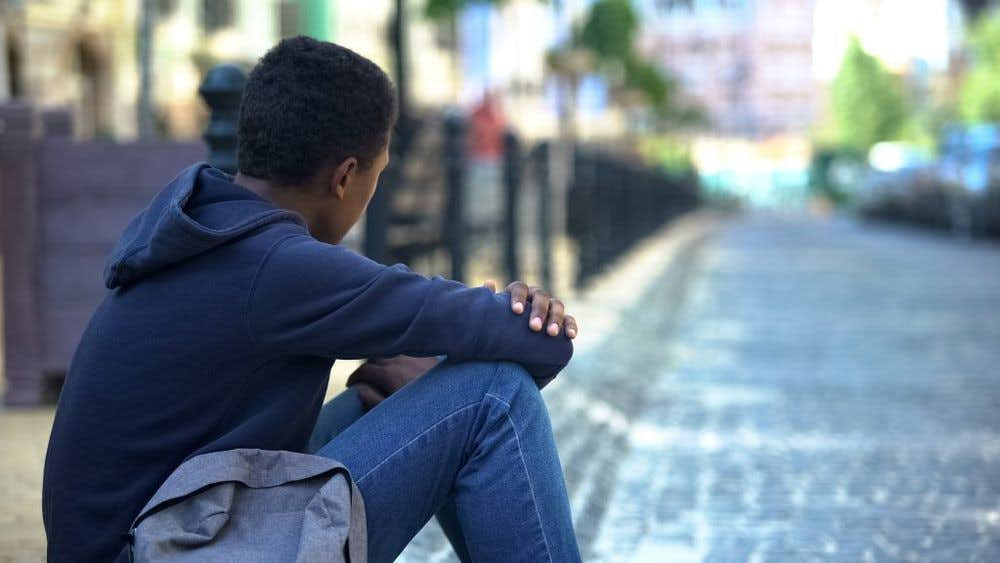November 30th, 2022

In my experience as a clinician, I have found that many people do not know the negative implications stress can have on children, specifically adolescents – children ranging in age from 12 to 18 years old. Needless to say, this is already a hard age to maneuver, and adding unexpected stress to a child's life can be scary. Normalizing conversations about childhood trauma is necessary to protect today’s adolescents.
As a parent or caregiver to an adolescent, you might be asking yourself, “how am I supposed to know about the trauma my child has endured if they do not tell me about it?”, or, “my child disclosed a traumatic event but I am not sure how to best support them.”
The article sections to come will give insight into considerations to take when evaluating a situation and how to help children who have experienced a traumatic event.
A traumatic event is a fear-provoking and dangerous experience that threatens a person's life, security, or mental and physical well-being; notably, witnessing such an event can also be traumatic.
While the safety of children is of up-most importance, dangerous events do happen. More so, while it is not possible to predict every situation that will cause a child traumatic stress, there are certain experiences that are more stressful than others, and being aware of them – as a parent, caregiver, or supporting adult in a child's life – can be critical in a child's journey to recovery.
The National Child Traumatic Stress Network (NCTSN) identifies the following as possible traumatic experiences for children:
Not all of the above experiences will be reported, as adolescents desire independence and control. Additionally, there could be immense feelings of embarrassment, guilt, and fear behind the experience, further hindering children from disclosing trauma. However, there are factors, signs, and symptoms that parents and caregivers can look out for.
If it has been brought to your attention that your child, or a child you know, has been a victim of one of these incidents, please refer to the section below, Ways adults can best support children and adolescents who have experienced trauma.

Note, although it is common for children to develop stress disorders after significant trauma exposure, not all children do develop these harmful symptoms. Established protective factors and risk factors can determine the impact an event has on a child. Therefore, it is important to be aware of the factors that contribute to the way children react post-trauma.
Per the NCTSN, some factors to consider when helping a child navigate life after a traumatic event are as follows:
All of these factors are associated with risky characteristics and protective characteristics, which end of the spectrum your child falls under varies from situation to situation and these circumstances, unfortunately, may be out of your control. Thus, remaining vigilant of specific signs and symptoms post-trauma is essential even when you believe that the protective factors outweigh the risk factors.
Per the NCTSN again, a common response to a traumatic event experienced by a child is called child traumatic stress. Child traumatic stress is a direct product of childhood trauma, whether that is 1 instance of trauma or more. It’s important to remember the event causing child traumatic stress can lead to big changes in a child's life – attachment losses, home placement, school placement, daily routines, injury, emotional dysregulation, etc. – so being mindful of life post-trauma is crucial.
Traumatic reactions can include a variety of signs and symptoms that are both emotional and physical, can be exacerbated when reminded of the traumatic event, and can negatively impact the child's overall quality of life and ability to function.

Signs of traumatic stress look different in every child, one of the reasons it can be difficult to detect such stress. However, there are certain signs that are considered more typical for adolescents.
The Child Mind Institute reported the following signs to be aware of:
A few more significant signs, reported by the Substance Abuse and Mental Health Services Administration (SAMHSA), are feelings of sadness and loneliness, developing disordered eating patterns, partaking in self-harming behaviors, and becoming sexually active.
SAMHSA also acknowledges that the impact of these lingering feelings, emotions, and behaviors from traumatic stress can be lifelong. Research shows that child trauma survivors are more likely to experience problems at school, regarding grades and social life. In more severe instances, adolescents can experience increased involvement with the child welfare and juvenile justice systems. Lastly, research also shows child trauma survivors are more likely to use mental health services and endure long-term physical health problems (i.e., diabetes and heart disease).

Helping children process trauma is a true family effort. First, as a parent or caregiver, taking steps to regulate your own stress will influence your child's reaction to stressful events. If you experienced the same traumatic event they did, be sure to take protective steps for your own mental health. They may notice this initiative and could then find comfort in asking for help. Children model the adults around them, so be sure the way you cope in front of your child is beneficial for both you and them.
Next, provide an environment where your child feels supported. Allow your child to feel sad, to openly cry, and express their emotions in a safe space. If your child does begin to show strong emotions, stay calm and listen, only intervening if you suspect they could harm themselves or others.
Another way to comfort children who have experienced trauma, an experience that is out of their control, is to help them feel in control; encourage them to be problem solvers, set boundaries with others, dress how is comfortable for them, and express their emotions and feelings in creative ways (writing, drawing, building, talking). Additionally, incorporate necessary factors of their life into a relaxing, familiar routine. Lastly, pay attention and be aware of sudden changes in behavior, language, and emotions.
To conclude, if you are a parent or caregiver who feels like you need extra help with an adolescent who has experienced a traumatic event, please seek help from a mental health professional. Seeking mental health treatment and processing trauma in therapy with adolescents can be essential, and it’s unfortunate this has been stigmatized for far too long. Children and adolescents must be protected from that negative rhetoric as there are dozens of services for children to process the trauma that you can find quite easily online or by asking your mental health provider.
That being said, if you are reading this post, you have already taken initiative toward bettering your child's future.
Written by: Autumn Holtschlag, AMFT, LPC.
At Clarity Clinic, we have highly trained staff specializing in therapy and psychiatry services. To learn more about how we can support your mental health, call Clarity Clinic at (312) 815-9660 or schedule an appointment today.
Our Services
Virtual/Online CarePHP and IOPAdult PsychiatryChild & Adolescent PsychiatryAdult TherapyChild & Adolescent TherapyCouples CounselingFamily TherapyGroup TherapyPsychological TestingTranscranial Magnetic Stimulation (TMS)